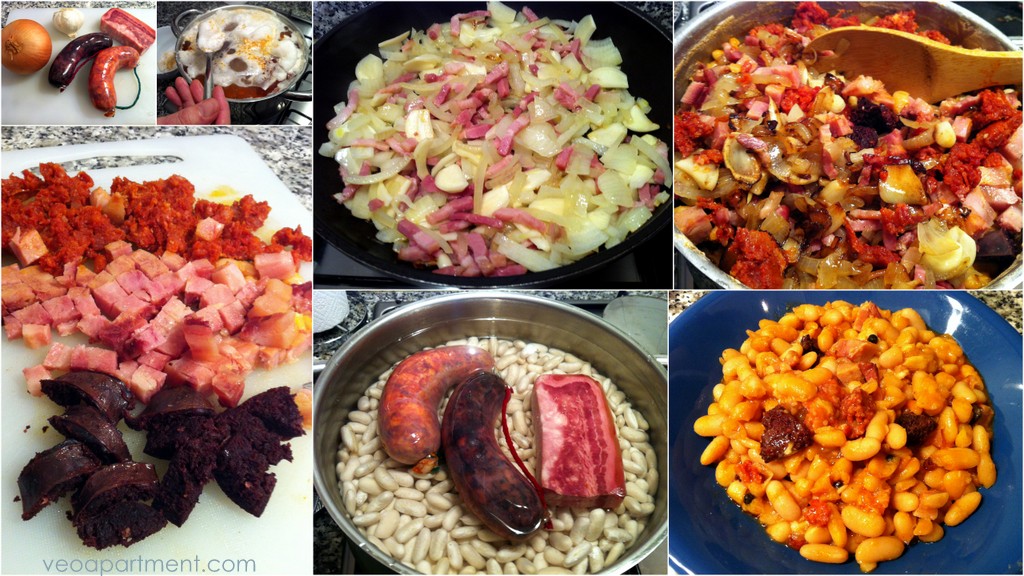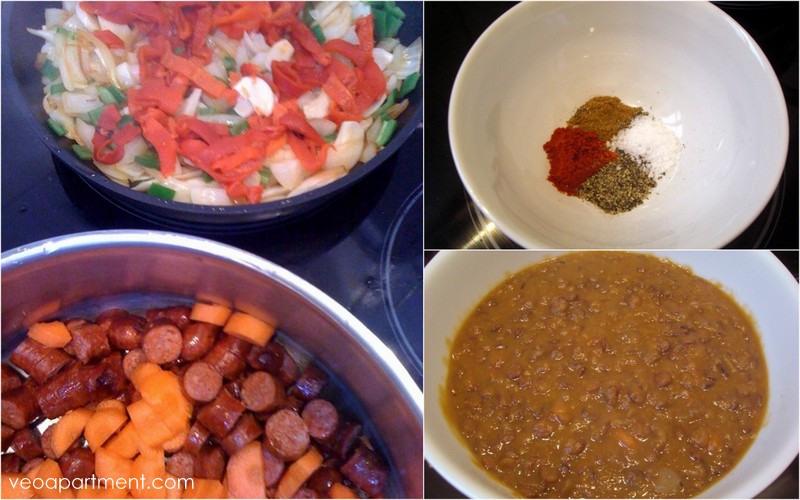This is another of those traditional Spanish bean stews that are so perfect for keeping you warm on a winter’s day. This one originated in the northern province of Asturias, but is now naturalised throughout Spain and also southern France. The basic ingredient is the large white beans known in Spain as fabes, cooked with pork belly, morcilla (blood sausage) and chorizo, which you can also find pre-packaged as “preparado de fabada” in most supermarkets.
The result is a really tasty and filling dish that works well as a snack, starter, or main meal.
- 1 kilo alubias blancas (large white beans)
- 100 grams each: tocina, chorizo and morcilla
- 200 grams chopped bacon (optional)
- 2 tsp pimentón piquante (hot smoked paprika)
- 1 tbsp black peppercorns
- salt to taste (I used about 3-4 tsp)
- 6 cloves garlic (peeled and chopped)
- 1 medium onion (diced)
Soak the beans in cold water overnight, then rinse well and place in large stewing pot. Cover with cold water (about an inch or so over), add the tocina, chorizo and morcilla. Add salt, peppercorns and paprika, mix well, then bring to a boil. As soon as the water boils, lower heat to a simmer and then start skimming off the sludge that rises to the top. Stir very occasionally, just enough so it doesn’t stick, otherwise the beans will break up. Add more water if required. Cooking time may vary, somewhere between 1-1.5 hours, until the beans are cooked through but still firm.
While the beans are cooking, sautée the onion and garlic until translucent, then add the bacon (if desired) and continue cooking until everything is nicely browned. When the beans are almost done remove the tocina, chorizo and tocina, cut them into small slices and return them to the pot. Then add the cooked onions, garlic and bacon. Give it a quick stir, add a bit more water if you need it, and simmer another 10 minutes.
If you’d like to learn how to make Fabada Asturiana or any other typical Spanish dish then we recommend Travel & Cuisine who will create a custom made cooking experience for you.
And if you are more interested in learning how to shop for yourself like a local so you can make your own fabulous meals in your holiday apartment, check out Azahar Sevilla’s Market & Tapas Tour.

